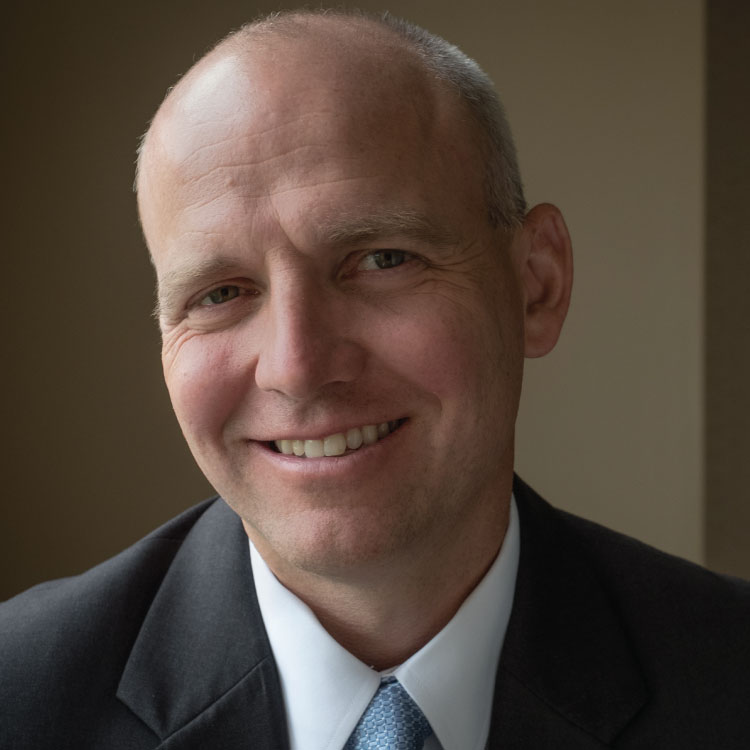If we were somehow forced to distill down all wealth and investment planning strategies to only one question we could answer for many of our clients to assure financial peace of mind, it would probably go something like this:
Can we confidently sustain our lifestyle for the rest of our lives and meet our long-term legacy goals with our investment assets?
Clearly, one question is simplifying to the extreme because underpinning that single question is a tailored and maintained investment strategy, integrated tax planning, estate planning, charitable planning, social security claiming, education savings, and many life changes that require wise counsel. Generally speaking, many of our clients have built a solid financial foundation from the lifelong habit of delaying gratification through prudent saving, which provides us with the raw material for formulating and executing on the investment and wealth plan. This lifelong savings habit can be hard to break, and we sometimes find ourselves sitting across the table convincing our clients they have ample financial bandwidth, and they could confidently spend more than the current pace to enjoy the fruits of the labor. Oftentimes, this falls on deaf ears and could be a result of the preconceived notion that “spending = stuff.” The last thing many of our clients need is more “stuff,” as they are usually not looking for a bigger house, fancy clothes, or more jewelry.
So, if they don’t need stuff, why should they spend more money? To answer that question, we like to reframe the perception of spending toward more fulfilling pursuits, such as experiences and time. After a lifetime of saving, many clients are best served focusing on “investing” their resources in things that don’t gather dust in their home or garage. Instead, spending on saving time and building or enhancing relationships with family and friends is a much better use of the years of stored up and delayed gratification.
First, Do the Math
This mindset and behavioral shift should not be undertaken without first taking a deep dive into the retirement cash flow plan. This means sitting down and adding up current expenses, liabilities, future expenses (including an inflation factor), healthcare assumptions, and desired charity and legacy goals. Next, add a “margin of safety” percentage to that total – just to be sure. Then, factor in conservative assumptions on future portfolio returns (including some bear markets) and, of course, a solid estimate of future tax liabilities – which can be the largest cash outflow in retirement.
However, this might still be too conservative as recent research from The RAND Center for the Study of Aging, Social and Economic Well Being found that in all levels of wealth, real spending—that is, spending adjusted for inflation—actually declined for both single and coupled households after age 65 at annual rates of about 1.7 percent and 2.4 percent, respectively. In short, factoring in increased real spending after age 65 is probably assuming too much spending, not too little.
That said, if forecasts make it abundantly clear that all goals will be met, even with conservative assumptions, it’s time to consider spending more on things that matter most, and not stuff.
Experiences: Money Well Spent
- Gifting to Charities, Family, and Friends Now: There’s an old saying: “Giving with warm hands is more fun than giving with cold hands.” While the sentiment is a bit morbid, the point is well made. It’s much more enjoyable to see the people or causes that actually benefit from your gift instead of just imagining what it might look like after death.
- As a refresher, one person can give another person (doesn’t have to be family) up to $17,000 (in 2023) in cash per year without having to file a gift tax return. There is no tax liability (nor tax deduction) to the donor and no taxable income to the recipient. So, a married couple could, in theory, give their younger married child (and spouse) $68,000 ($17,000 x 4) per year without having to consider the IRS. That’s a lot of money, but the point is there’s ample room to give when most adult kids need it most when they are young and just getting started in life.
- Charitable contributions are another great way to enjoy giving while living, and, assuming the donations are made to a legitimate charity, there are income tax advantages. We advise on many strategies on this topic – too many to cover here – but the basic idea is that if the cash flow model allows it, consider seeing the benefits to your charity sooner rather than later.
- Education is clearly a wonderful gift as well and contributing to grandkids’ 529s, or even helping grown kids pay off student loans, can be an “investment” that yields benefits for generations to come.
- Travel: On the roster of spending on experiences, travel is almost always what comes to mind first. But given the hassles of flying or the effort required for long drives, it’s just not the same experience it used to be. But with a few tweaks (and more dollars of course), we believe travel can still be very rewarding.
- Spend on the flying experience: Assuming the cash flow model allows, spending on flying first class or business class and flying direct can be money well spent and make the travel experience much more tolerable. This might be tough for the thrifty retiree, but upgraded seats are spacious, boarding is usually a breeze, airport lounges can be quite comfortable, and the food onboard is actually palatable. Add in a subscription to a pre-screened security service (e.g. Clear or TSA Pre-Check), and the airport experience almost becomes bearable! And if connecting flights can be avoided to eliminate the stresses of late and delayed arrivals, flying could begin to approach what it was back in the good ole’ days.
- Spend on the accommodations: Along the same lines, spending extra dollars for the top-rated hotel or house rental with more room can be worth it to make the experience memorable and avoid hassles.
- Personal Trainer: There isn’t a much better return on investment in one’s life than good health. A good personal trainer can be expensive, but not only do they provide customized and safe instruction but often their structure, schedule, and accountability are just enough to keep the consistency (and health benefits) of going to the gym or the home gym.
Time Savers: Money Well Spent
At the risk of straying outside the wealth planning lane, we may all agree our most precious and limited resource is time. Time to spend with loved ones, friends, and family to build, sustain, and enhance relationships. Realizing this, we believe time spent on tasks and hassles that are, at best, annoying and, at worst, stressful is a waste. Assuming the cash flow plan allows it, all of these should be outsourced to those who can accomplish the same thing more efficiently and usually more effectively. These include but are not limited to:
- Lease Your Car: In what may be considered financial blasphemy to the thrifty consumer, leasing a car versus buying for cash or financing might make sense when factoring in more than just the numbers. Clearly owning a car for 10 – 15 years is typically the most fiscally prudent approach. But, in the broader context of meaningful spending, leasing a car eliminates the hassles and uncertainties with maintenance, wear and tear (tires, brakes, etc.), surprise expenses, and potential dangers when driving an older car. Instead, leasing ensures one is always driving a newer model, with little to no maintenance issues, while always benefiting from the latest safety and technology features – not to mention that new car smell. One could make the argument that sinking $40,000 or $50,000 into a depreciating asset like a car might not make the most sense when those same dollars could be growing and compounding over time, even when factoring in monthly lease payments.
- Hire a Cleaning Service: Some may argue a cleaning service doesn’t do as thorough a job as we might do ourselves, but it’s worth trying. Time spent dusting, vacuuming, scrubbing toilets, etc. can instead be spent having a meal with friends or taking a grandchild out for lunch. After a few months of this tradeoff, most people get over the occasional missed spot and appreciate the opportunity costs of time building relationships.
- Hire Lawn and Landscape Service: Along the same lines as the cleaning service, yard work can be a source of personal pride (as someone who still cuts their own lawn can attest). But, if not a significant source of personal pride, hiring a service with multi-person crew with industrial strength tools and machines can help avoid injuries, and sore backs and can free up a good portion of the week, especially in the summer months.
Bottom Line
If proper wealth planning and an in-depth cash flow plan (with a heavy dose of conservative future assumptions) yield a very high probability of the capacity to spend more, we are strong advocates. Sometimes it just takes a thorough analysis and “permission” or a nudge to enjoy the fruits of labor. Spending on experiences and time-saving services is often overlooked but can be a great source of enhancing a retirement lifestyle without filling up the basement and garage with more stuff. Over the years, we have worked with many clients who could benefit from this mindset shift but totally understand it’s difficult to change what has been a life-long saving habit, imprinted on the psyche. But we find one phrase helpful to illustrate and motivate folks to reconsider how they think about their spending: “Fly first class- because if you don’t, your kids certainly will!”

